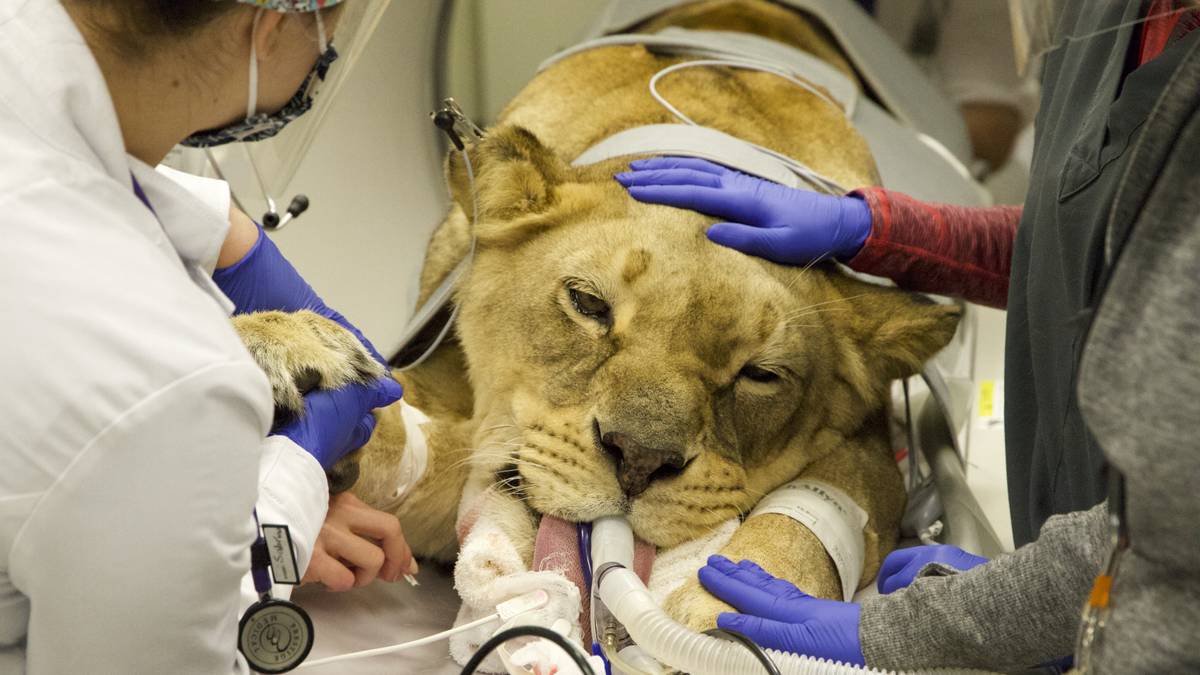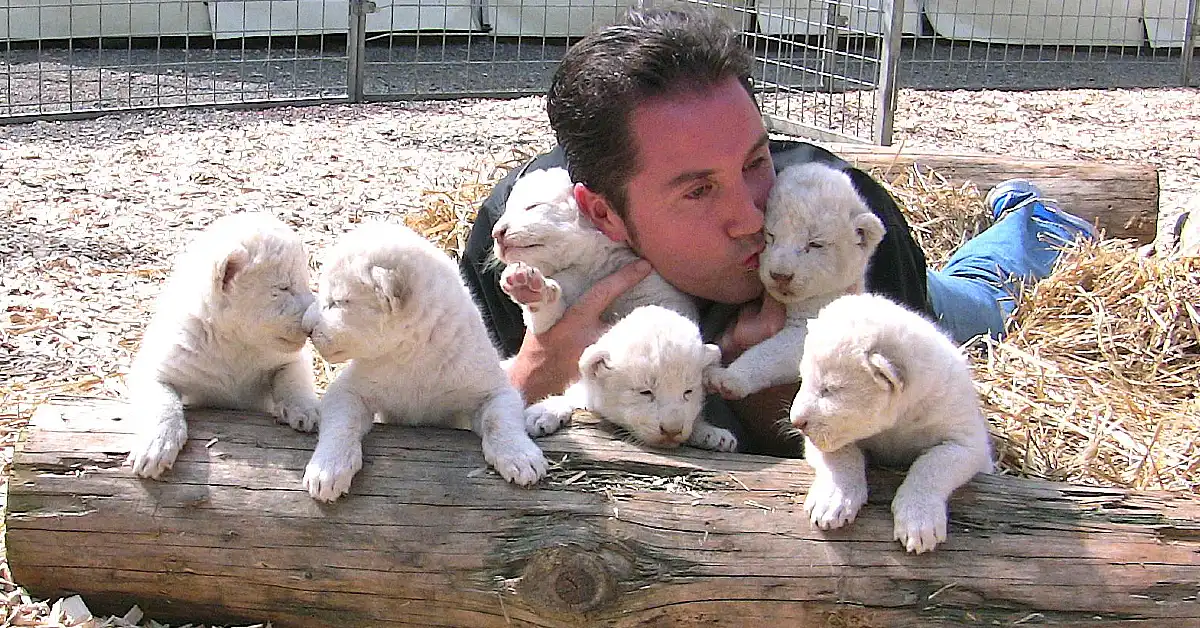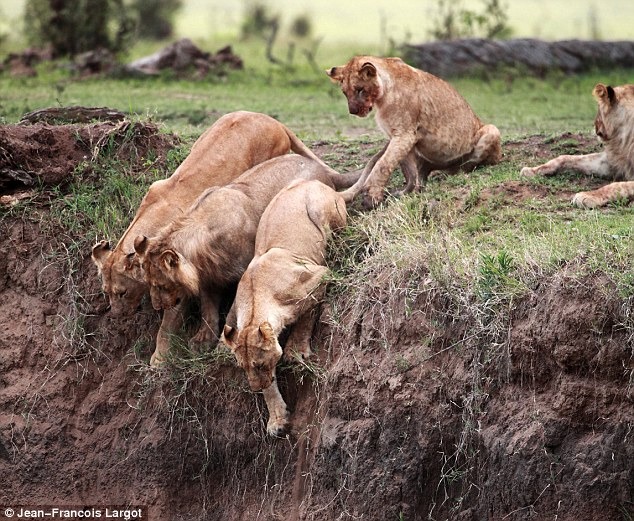Some may look familiar, while others are strange hybrids of modern-day animals.
:max_bytes(150000):strip_icc():format(webp)/GettyImages-1133035827-130be9e2ee9f4b3c8bc20688b4a4495a.jpg)
Daniel Eskridge / Getty Images
The daedon lived around 20 million years ago in North America.
Megafauna are big animals. Elephants are megafauna, as are giraffes, whales, cows, deer, tigers, and even humans. Megafauna can be found on every continent and in every country.
For each living species of megafauna, there are a large number of extinct megafauna. In the age before widespread settlement, without the pressures of human interference, animals were free to evolve into some truly awe-inspiring forms. Imagine beavers the size of bears or wild pigs larger than modern-day rhinoceroses, or even sloths as large as elephants.
Humans can be blamed for pushing many of the most recently extinct megafauna to their limits. It’s generally agreed that the populations of many large animals plummeted in the first thousand years or so after humans reached a continent. Our earliest ancestors would have, quite reasonably, gone after the largest animals to feed their families and kill the biggest predators to cut down on competition and attacks. Mix in human ingenuity, climatic changes, and hundreds of thousands of years, and you soon get a land denuded of megafauna.
If we should ever perfect time travel, ecologists will be lining up for trips to study the bizarre zoology of the past. With that in mind, here are nine otherworldly examples of now-extinct megafauna.
1of 9Glyptodon:max_bytes(150000):strip_icc():format(webp)/__opt__aboutcom__coeus__resources__content_migration__mnn__images__2013__09__Glyptodon_Riha2000-a63db985679041bb9ca96eabe9933b2e.jpg)
Pavel.Riha.CB / Wikimedia Commons / CC-BY-SA-3.0
Glyptodons were enormous armored mammals that became extinct around 10,000 years ago. Roughly the size of a VW Beetle, the glyptodon were well-armored against attacks from predators. A relative of modern-day armadillos, they were unable to pull their head into their shell like turtles and relied on thick skull armor and sharp spikes for defense. Their thick tail could be used as a club and featured a bony knob at the end.1 They ate just about anything, from plants to insects to carrion.
2of 9Argentavis:max_bytes(150000):strip_icc():format(webp)/__opt__aboutcom__coeus__resources__content_migration__mnn__images__2017__01__Argentavis-Magnificens-d85a83eecb3944e796057ea4dfa856a2.jpg)
Wangyonglee / Wikimedia Commons / CC-BY-SA-3.0
The Argentavis has the distinction of being the largest flying bird ever discovered. The massive bird could grow to be 24 feet, wingtip to wingtip, twice the size of the Andean condor, which is one of the largest birds in the world today. The Argentavis is thought to have relied on thermal currents to stay aloft. The creatures’ huge size would have made takeoffs more difficult, and it’s likely that they made their homes in the mountains where they could use mountain slopes and headwinds to aid in launching.
Though it would certainly be frightening to find yourself under a soaring Argentavis, the living wouldn’t have too much to worry about—it’s believed that the bird was a scavenger that preferred its meals already-killed. Scavenging, as opposed to hunting, would have been a way for the Argentavis to conserve the energy required to move its massive body.
When it comes to reproduction, it’s believed that the Argentavis likely raised few young for long periods of time. Staying with the parent longer would increase the offspring’s chances at survival.2
3of 9Paraceratherium:max_bytes(150000):strip_icc():format(webp)/__opt__aboutcom__coeus__resources__content_migration__mnn__images__2013__09__1024px-Indricotherium11-d1bb9ffb83c04d51a76b7fd71b92dc66.jpg)
Dmitry Bogdanov / Wikimedia Commons / CC-BY-3.0
The Paraceratherium were enormous beasts that lived around 25 million years ago in what is now Asia (China, India, Kazakhstan, and Pakistan). Standing nearly 20 feet tall at the shoulder, Paraceratherium remain the largest known species of mammal to walk the Earth.
:max_bytes(150000):strip_icc():format(webp)/__opt__aboutcom__coeus__resources__content_migration__mnn__images__2013__09__Rhino_sizes-3385e3a3ddbf4de7acbeba25d70c8c01.jpg) The relative sizes of Paraceratherium, Elasmotherium, white rhinos, Indian rhinos, black rhinos and Sumatran rhinos compared to a human. DagdaMor / Wikimedia Commons / CC-BY-3.0
The relative sizes of Paraceratherium, Elasmotherium, white rhinos, Indian rhinos, black rhinos and Sumatran rhinos compared to a human. DagdaMor / Wikimedia Commons / CC-BY-3.0
Our fossil record of the Paraceratherium is relatively sparse, so it’s hard to say what they looked like exactly, but the general scientific consensus is that they had long, muscular necks and heads not unlike a hornless rhinoceros. Their long reach allowed them to graze on tall trees, which means they likely occupied an ecological niche similar to that of a giraffe, with little competition from smaller, shorter creatures. It’s believed that Paraceratherium had “muscular lips that allowed it to grip and manipulate food before placing it in its mouth.”3
4of 9Megalania:max_bytes(150000):strip_icc():format(webp)/__opt__aboutcom__coeus__resources__content_migration__mnn__images__2017__01__Varanus_priscus_Melbourne_Museum-793e3c0af88041c0a10b762ce29691a5.jpg)
Cas Liber / Wikimedia Commons / Public Domain
Megalania (Varanus priscus), whose name translates to “ancient great roamer,” was a giant carnivorous goanna that may have grown up to 23 feet long and weighed more than 4,000 pounds. This monitor lizard inhabited the grasslands, open forests, and woodlands of eastern Australia during the Pleistocene Era, and likely fed on other medium and large animals, including mammals, snakes, birds, and other lizards, using its serrated blade-like teeth. It may have been venomous, and if it was, it would be the largest known venomous vertebrate.
5of 9Ground Sloth:max_bytes(150000):strip_icc():format(webp)/__opt__aboutcom__coeus__resources__content_migration__mnn__images__2017__01__ground-sloth-skeleton-518a70b4dfa04c26b30e6d32c10e6bb9.jpg)
Dallas Krentzel / Flickr / CC BY 2.0
The ground sloth is one of the few land mammals that could give the Paraceratherium a run for their money. Weighing up to 9,000 pounds and stretching 20 feet in length, the ground sloth ambled around the woodlands and grasslands of South America as recently as 10,000 years ago, supporting itself by eating grasses, shrubs, and leaves. The ground sloth had the misfortune of overlapping with humanity’s reign and was likely hunted to extinction as we trickled down from North America. Because ground-dwelling sloths had “no previous experience with human predators,” they likely would have been “easy prey for prehistoric hunters.”4
6of 9Megalodon:max_bytes(150000):strip_icc():format(webp)/__opt__aboutcom__coeus__resources__content_migration__mnn__images__2013__09__Megalodon_skeleton-3677449d3b644ab8bad1271791f5ef37.jpg)
Calvert Marine Museum Solomons, Maryland / Wikimedia Commons / CC-BY-SA-3.0
Though all of the entries on this list were large creatures, none of them were really anything a person would have to worry about. But not this one. The megalodon (whose name means “giant tooth”) can be best thought of as a giant great white shark—in fact, the largest shark that has ever lived.
It was a highly capable predator sitting at the top of the food web. It could grow to be more than 50 feet in length and sported teeth seven inches long. The megalodon dined on whales, dolphins, porpoises, and giant sea turtles. Some whale bone fossils have been found with megalodon tooth marks etched into them.
It’s believed the megalodon went extinct when the planet entered a period of global cooling, following the Pliocene Era (2.6 million years ago). This would’ve shrunk its habitat, as it liked warm tropical waters, and reduced access to food. The shallow coastal waters where it likely gave birth to pups might have become too cold to remain viable, as well.5
:max_bytes(150000):strip_icc():format(webp)/__opt__aboutcom__coeus__resources__content_migration__mnn__images__2017__01__Megalodon-Carcharodon-Scale-Chart-45d48ac193bf40ec9b3c1f1384b83051.jpg) This chart compares the size of the megalodon with the great white shark and a human. Steveoc 86 / Wikimedia Commons / CC BY-SA 4.07of 9Daeodon
This chart compares the size of the megalodon with the great white shark and a human. Steveoc 86 / Wikimedia Commons / CC BY-SA 4.07of 9Daeodon:max_bytes(150000):strip_icc():format(webp)/__opt__aboutcom__coeus__resources__content_migration__mnn__images__2013__09__Jay_Matternes_Miocene_Daeodon-d1a989d53bcf416b8c2f80dd6bb4c9fc.jpg)
Jay Matternes / Wikimedia Commons / Public Domain
The daeodon, like the megalodon, is worthy of a healthy dose of fear. They were enormous hulking towers of brawny pig that lived around 20 million years ago in North America. They could grow to be six feet high at the shoulder and weigh thousands of pounds. It’s telling of their dominance of the food web that they belong to a family of animals nicknamed “hell pig” and “terminator pig.”
Fossilized remains of their teeth suggest that they were omnivorous, dining both on animals (some as large as modern-day cows) and plants. It’s believed that they operated as carrion scavengers, tracking other predators “just to steal their kills.”6 It likely had a finely-tuned sense of smell to detect where its next meal could be found.
8of 9Giant Otter:max_bytes(150000):strip_icc():format(webp)/__opt__aboutcom__coeus__resources__content_migration__mnn__images__2017__01__giant-otters-artist-crop-2662da5d352044f9a2f6641434d0ddc4.jpg)
Mauricio Antón / Journal of Systematic Paleontology
Around 6 million years ago, giant otters (Siamogale melilutra) the size of wolves and weighing up 110 pounds (twice the size of modern-day otters) lived in what is now Asia. In 2017, American paleontologists excavating an ancient lake bed in the Yunnan Province in southwestern China found a complete skull, jawbone and teeth.7
The teeth showed that the furry creatures lived on extra-large shellfish and mollusks, which it cracked open with a powerful jaw. Why it was so large, though, remains a mystery. Typically animals get bigger in order to subdue their prey, but this giant otter only ate small creatures like mollusks, which would not have needed to be physically overpowered.8
9of 9Giant Beaver:max_bytes(150000):strip_icc():format(webp)/__opt__aboutcom__coeus__resources__content_migration__mnn__images__2013__09__giant-beaver-painting-f152d0e6d20949a8bd92465801984c4a.jpg)
Charles R. Knight / Wikimedia Commons / Public Domain
Giant beavers, driven to extinction around 11,000 years ago, were plus-sized versions of today’s furry little landscape engineers and the largest rodent of the last ice age. They could grow more than eight feet in length and tip the scales at 200 pounds. Think of a beaver the size of a black bear—that’s a big animal.
Evidence suggests that giant beavers built lodges just like modern-day beavers. They were mostly commonly found in the area south of the Great Lakes in central North America, in what’s now Illinois and Indiana, though fossils have been found as far away as Florida, Toronto, and the Yukon.




